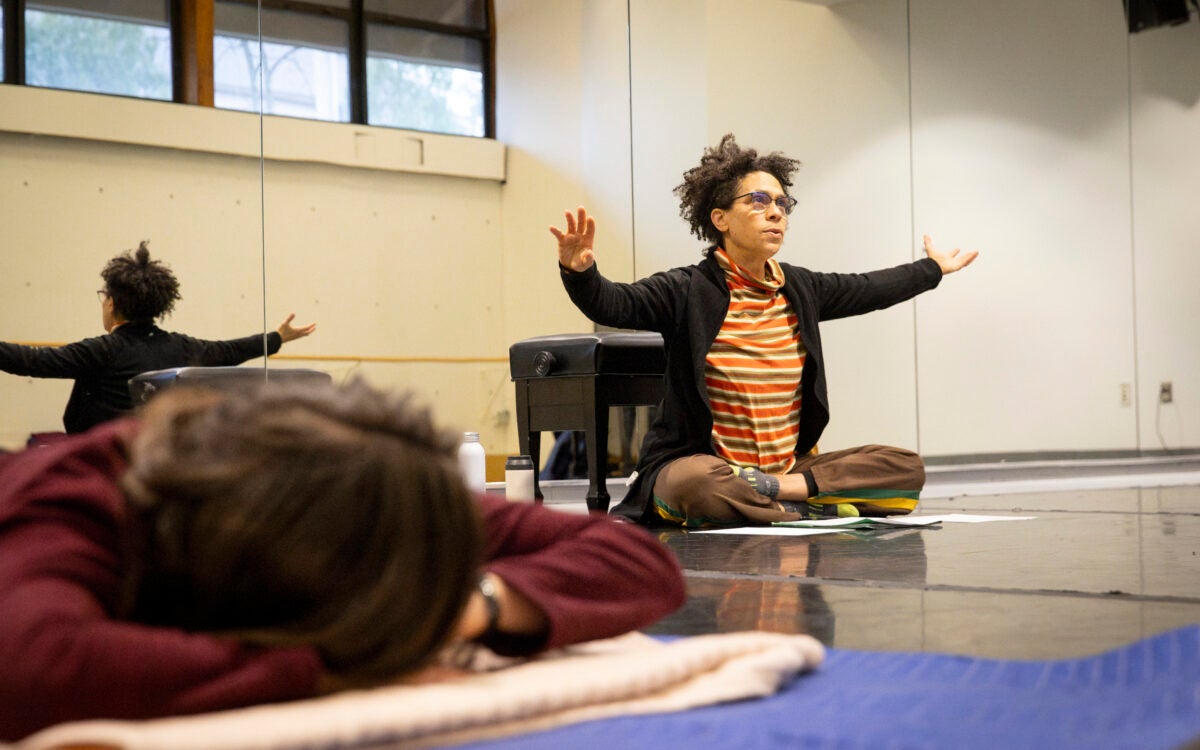
“I was amazed by the personal intensity with which the justices pursued their beliefs and views,” said Noah Feldman, whose book “Scorpions: The Battles and Triumphs of FDR’s Great Supreme Court Justices” chronicles the dealings between justices Felix Frankfurter, Hugo Black, Robert Jackson, and William O. Douglas.
Jon Chase/Harvard Staff Photographer
Feeling the pinch
FDR’s ‘Scorpions’ bit and bickered, but got the job done
Inspired by fellow Harvard professor and author Louis Menand, Bemis Professor of International Law Noah Feldman penned a gripping history of four of President Franklin Delano Roosevelt’s most prominent, and turbulent, Supreme Court justices.
“I wanted to try my hand at writing an intellectual history of the Constitution through the stories of the people who shaped it in the middle of the 20th century,” said Feldman, who focused on justices Felix Frankfurter, Hugo Black, Robert Jackson, and William O. Douglas.
Their story, depicted in Feldman’s “Scorpions: The Battles and Triumphs of FDR’s Great Supreme Court Justices,” plays out like a political soap opera.
“Chosen by FDR as liberals who had attacked Wall Street and supported the New Deal, these justices all believed Congress should be allowed to pass reform legislation without interference from the Supreme Court — the big constitutional question of the 1930s,” explained Feldman. “But as they confronted civil liberties and civil rights during and after the war, they splintered: Frankfurter and Jackson favored restraint, while Black and Douglas embraced activism. At the same time, their personal relationships fell apart, and they began to hate each other.”
Although the “scorpions” (dubbed so after “nine scorpions in a bottle,” Oliver Wendell Holmes Jr.’s reputed quote about the Supreme Court) splintered ideologically, and disagreed on how the Constitution should be interpreted, they came together to end the internment of Japanese-Americans during World War II, to revoke President Truman’s nationalization of American steel mills, and to end school segregation with their pivotal ruling in Brown v. Board of Education.
“I was amazed by the personal intensity with which the justices pursued their beliefs and views,” said Feldman. “They really believed that the future of the republic was at stake. This is reflected not only in the intensity of their judicial rhetoric — much harsher than today — but also in the way they continued to participate in the affairs of the executive branch and the greater world. Robert Jackson even took a leave of absence from the courts to become chief prosecutor at Nuremberg — almost unimaginable today.”
Nevertheless, today’s court faces some similar challenges, noted Feldman. “These justices came on the bench at a time when the Supreme Court was inventing new constitutional rights to protect corporations. There is a recurrence of this tendency today, as in the Citizens United decision, which extended to for-profit corporations the same free-speech rights as those accorded private individuals in the election context. So there is a parallel there.”
But, Feldman discerns, personality-wise, that these justices were radically unlike today’s crop.
“They were self-made, ambitious, political, and intellectually bold. They had made mistakes before going on the bench; none could have been confirmed under today’s standards. Yet they achieved constitutional greatness as a result of these qualities that today would be disqualifying.”




